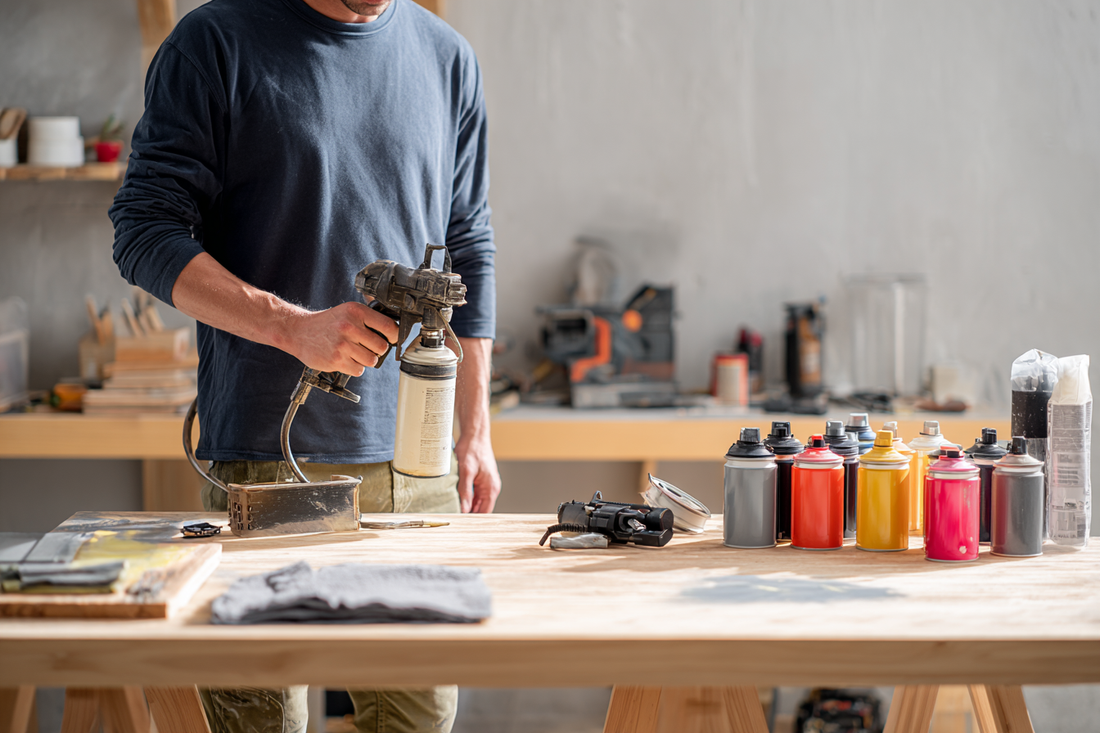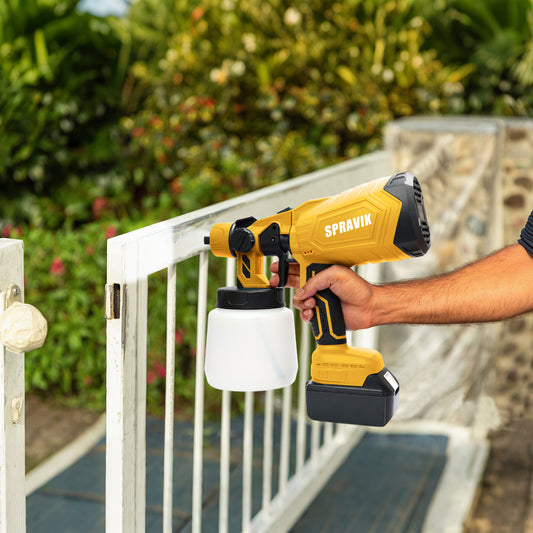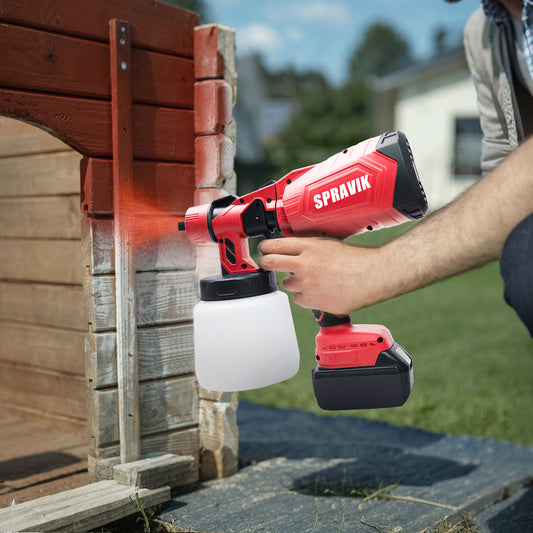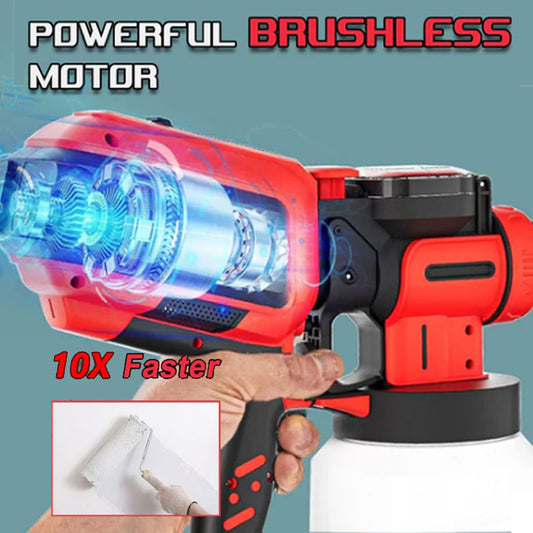
How to Prep Your Surface for Spray Painting: Step-by-Step Tips
Spravik AdminSpray painting is one of the most efficient, versatile, and cost-effective methods for transforming the look of virtually any object or surface. Whether you're tackling a weekend DIY furniture revamp, upgrading automotive parts, or refreshing metal railings, achieving that professional, flawless finish comes down to one critical factor: surface preparation.
No matter how advanced your spray gun is or how high-quality your paint, skipping surface prep can lead to chipping, bubbling, uneven coverage, or peeling. In this comprehensive guide, we'll walk you through every essential step of prepping various surfaces for spray painting. From cleaning and sanding to priming and safety precautions, this is your go-to resource for a perfect paint job.
Why Surface Preparation Matters
Before diving into the how-to, let’s address the why. Surface preparation is vital because:
It ensures maximum adhesion between the surface and the paint.
It prevents defects such as peeling, flaking, and cracking.
It delivers a smoother, more uniform finish.
It extends the lifespan and durability of the painted surface.
Poorly prepared surfaces lead to poor outcomes. Investing time in prep saves you from costly do-overs and frustration.
Understand Your Surface Type
Different surfaces require different preparation techniques. Here are the common ones:
Metal
Prone to rust and corrosion.
Often requires a rust inhibitor or specific metal primer.
Wood
May have knots, grain, or existing paint/stain.
Needs thorough sanding and sometimes sealing.
Plastic
Slick and non-porous.
Requires degreasing and a plastic-compatible primer.
Glass and Ceramics
Ultra-smooth and difficult for paint to adhere.
Requires etching or special primers.
Drywall or Plaster
Porous and absorbent.
Often needs sealing before priming.
Understanding your substrate ensures you're choosing the right tools and methods from the start.

Essential Tools and Materials Checklist
Before beginning your prep work, gather all necessary materials:
Drop cloths or plastic sheeting
Painter's tape and masking film
Microfiber cloths or tack cloths
Degreaser or rubbing alcohol
Mild detergent and sponge
Sandpaper (various grits: 80, 120, 220)
Putty/filler and putty knife
Primer (surface-specific)
Spravik HVLP spray gun (for consistent results)
Protective gear (gloves, mask, goggles)
Vacuum or shop vac
Step-by-Step Surface Preparation Process
Step 1: Choose Your Work Area
Ventilation is key. Opt for a well-aired garage, patio, or workshop.
Protect surroundings with drop cloths.
Set up good lighting to inspect surface defects.
Step 2: Initial Cleaning
Remove any dust, dirt, grease, or residue.
Use a mild detergent and warm water for general cleaning.
For greasy surfaces (especially metal and plastic), use a degreaser or isopropyl alcohol.
Rinse and let dry completely.
Step 3: Surface Sanding
Wood: Start with 80-grit, finish with 220-grit.
Metal: Light sanding with 120-grit to remove oxidation or old paint.
Plastic: Light scuff sanding with 220-grit.
Always sand in the direction of the grain (for wood).
After sanding, wipe with a tack cloth or damp microfiber towel.
Step 4: Repair and Patching
Fill dents, holes, or cracks with wood filler, spackle, or metal putty depending on the surface.
Let dry as per product instructions.
Sand smooth to flush the patch with the surrounding surface.
Step 5: Apply Primer
Select a primer compatible with your surface and paint.
Spray evenly in sweeping motions (6-8 inches from the surface).
Allow proper drying time (usually 1-4 hours).
Lightly sand the primer coat with 220-grit for optimal smoothness.
Step 6: Final Wipe and Inspection
Use a lint-free cloth to remove dust.
Inspect for blemishes, rough spots, or missed patches.
Repeat patching/sanding if necessary.
Surface-Specific Preparation Advice
Preparing Wood for Spray Painting
Deal with knots by sealing them with shellac-based primer.
Watch for raised grain after first sanding.
Use a sanding sealer for ultra-smooth finishes on fine furniture.
Preparing Metal
If rust is present, use a wire brush and rust remover before sanding.
Apply rust-inhibiting primer.
Avoid moisture; metal must be fully dry before priming.
Preparing Plastic
Wash thoroughly with warm soapy water.
Scuff-sand surface lightly.
Use a plastic adhesion promoter before priming.
Preparing Previously Painted Surfaces
Check for peeling or flaking paint.
Sand thoroughly to dull the finish.
Clean with TSP (trisodium phosphate) for stubborn grime.
Common Surface Prep Mistakes to Avoid
1.Skipping sanding – reduces adhesion.
2.Painting over dust or grease – causes bubbling.
3.Using wrong primer – leads to poor bonding.
4.Poor lighting – you’ll miss surface imperfections.
5.No protective gear – exposes you to fumes and particles.
Safety Tips and Environmental Considerations
Always wear respirator masks, safety glasses, and gloves.
Keep a fire extinguisher nearby, especially with solvent-based primers.
Avoid spraying near flames or heat sources.
Use low-VOC or water-based products where possible.
Dispose of used rags, paint cans, and primers responsibly.
Final Words: Prep Like a Pro
Every beautiful paint job starts long before you pull the trigger on your spray can or sprayer. Surface prep may not be the most exciting part of a DIY project, but it is absolutely the most critical.
From deep-cleaning and sanding to detailed priming and repairing, each step contributes to the final outcome. For best results, always take your time, use the right tools, and follow manufacturer recommendations. The better your prep, the longer your paint will last.
Spravik offers a full line of professional-grade spray guns, air compressors, and accessories to help your painting project go smoothly from start to finish.










